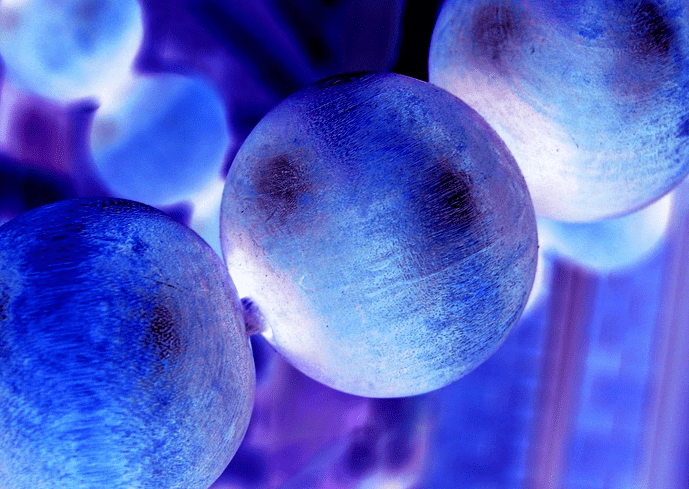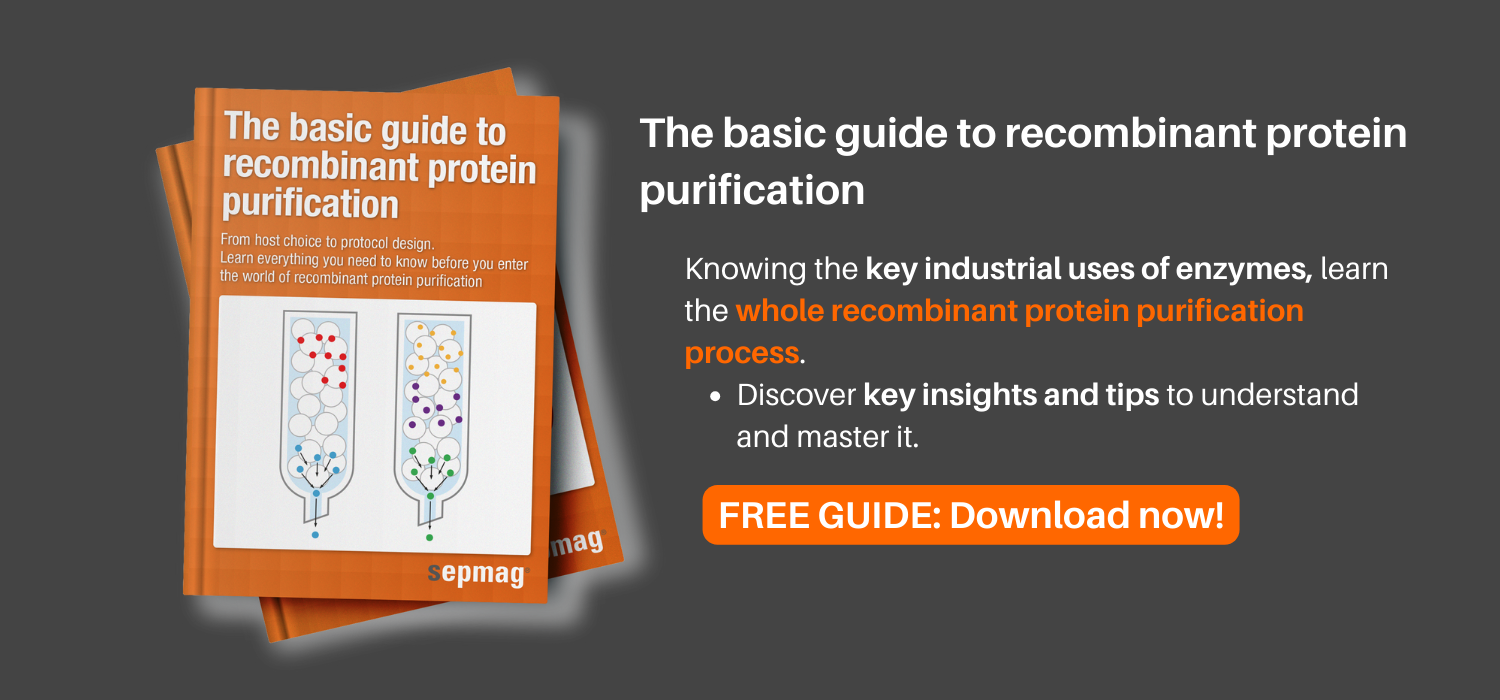Enzymes: an overview
Enzymes are proteins with the ability to catalyze chemical reactions. We have several articles you can read to learn more about proteins, their uses, and isolating them for research and clinical purposes. Check out our protein isolation article if you are thinking about how to best purify your protein of interest or read our protein assay article to learn more about working with proteins. Enzymes are particularly interesting and useful due to their catalytic activity. The molecule that goes into the enzyme for manipulation is called the substrate. You will often see this interaction called the “lock and key” interaction as the substrate has to fit just right into the pocket of the enzyme for it to work properly (enzymes are highly specific!), the way a key is very specific to the lock it goes into.

Industrial use of enzymes: an mechanism
Before we give you lots of good examples of industrial uses of enzymes, we will elaborate on an enzymatic mechanism in detail so you have a picture of how it works. Lactase is an important enzyme for humans and for the dairy industry. In humans, lactase is a transmembrane protein in the intestine that breaks lactose down into glucose and galactose. These two sugars can then be transported out of the intestine and into the blood. When humans stop producing lactase, they start being intolerant to lactose. This is where lactase in industry comes in. Lactase is used by companies producing lactose-free milk to break down the lactose in the milk before selling it!
Industrial use of enzymes: an introduction
Enzymes are used in the food, agricultural, cosmetic, and pharmaceutical industries to control and speed up reactions in order to quickly and accurately obtain a valuable final product. Enzymes are crucial to making cheese, brewing beer, baking bread, extracting fruit juice, tanning leather, and much more. The industrial uses of enzymes are also increasing since they are being used in the production of biofuels and biopolymers. The enzymes can be harvested from microbial sources or can be made synthetically. Yeast and E. coli are commonly engineered to overexpress an enzyme of interest. This type of enzyme engineering is a powerful way to obtain large amounts of enzyme for biocatalysis in order to replace traditional chemical processes.
Industrial uses of enzymes: Examples
Breweries wouldn’t be able to brew our beer without enzymes and the yeast that contain them. One of the first steps of the brewing process involves sprouting grain and breaking that starch into maltose and glucose sugar molecules via amylase enzymes. Yeast then consume these simple sugars and produce alcohol and carbon dioxide via glycolysis and alcoholic fermentation. These processes together require a whopping 12 enzymes! Using the whole yeast organism is much more efficient that trying to recreate this process with synthetic enzymes. The alcoholic fermentation process takes two pyruvate molecules from glycolysis and converts them to ethanol via pyruvate dehydrogenase and alcohol dehydrogenase. The production of cheese follows a similar process, but instead requires bacteria to perform glycolysis to convert the sugars in milk to the lactic acid that gives cheese and yogurt its exceptional flavor.
Enzymes are transforming the non-food industrial sectors to improve processes and decrease energy usage. For example acrylamide is made from acrylonitrile using nitrile hydratase. The organism Rhodococcus rhodochrous J1 was directed to overexpress the enzyme nitrile hydratase. This enzyme efficiently converts acrylonitrile into acrylamide under mild conditions and offers an improvement over more traditional techniques.
The conventional method of producing glycolic acid involved reacing formaldehyde with carbon monoxide over an acid catalyst at high temperature and pressure. Enzymes have offered a more mild alternative. E. Coli can be made to overexpress nitrilase, which, when combined with other enzymes such as lactoaldehyde reductase and lactoaldehyde dehydrogenase in a chain reaction provides an easier method for glycolic acid production.
Enzyme engineering
If whole organisms can’t be used for an industrial process then it might require a particular enzyme structure and orientation. This is difficult to accomplish with traditional harvesting or chemical synthesis methods. Many times a specific enantiomer is required to improve the efficiency of a reaction, and it can be difficult to find a high proportion of a specific molecule in nature. However, with new directed evolution technologies it has become possible to develop designer enzymes by forcing mutations in the enzyme production processes of bacteria or yeast. These mutations sometimes produce an organism that is particularly useful for producing enzymes in industry. This process can improve organism and enzyme stability, substrate specificity, and enantioselectivity. Most industrial processes demand that an enzyme be highly specific to the substrate, and there is always room for improvement to the process.
Other industrial application of enzymes in industry
Other industrial application of enzymes in industry include lipase, polyphenol oxidases, lignin peroxidase, horseradish peroxidase, amylase, nitrite reductase, and urease. Many of these enzymes are used for biosensors because of the specific affinity between a substrate and its enzyme. Others, such as horseradish peroxidase, are used for chemical detection of biomarkers in tissue.
Of course, we can’t overlook the importance of enzymes in the food industry. Purified enzymes are essential for brewing beer, baking bread, making cheese, and extracting fruit juice. Cheesemaking is an age old tradition that requires surprisingly few ingredients: milk, bacteria, rennet, and salt. The bacterial culture is the source of flavor and texture. Rennet is an enzyme that breaks down the milk protein casein to form the cheese curd. The enzyme is naturally found in the stomach’s of milk drinking/producing animals, but fermentation-produced chymosin is sourced from plant, fungal, and microbial sources for industrial cheese-making purposes.
The quest for green technology is driving innovation in both the production of specific enzymes and in the use of enzymes already available. Whether it is in the form of using enzymes to make a new use of an old renewable energy source, or simply eliminating the need for extreme temperatures and pressures to synthesize a product, enzymes are an increasingly important component of green energy technologies. Our ability to create designer enzymes will push these molecules to the forefront of many industrial processes including food, drugs, cosmetics, plastics, and much more in the immediate future.
Related news
- Magnetic beads protein A
- Affinity Chromatography and column purification of proteins and nucleic acids
- Sonication cell lysis protocol




